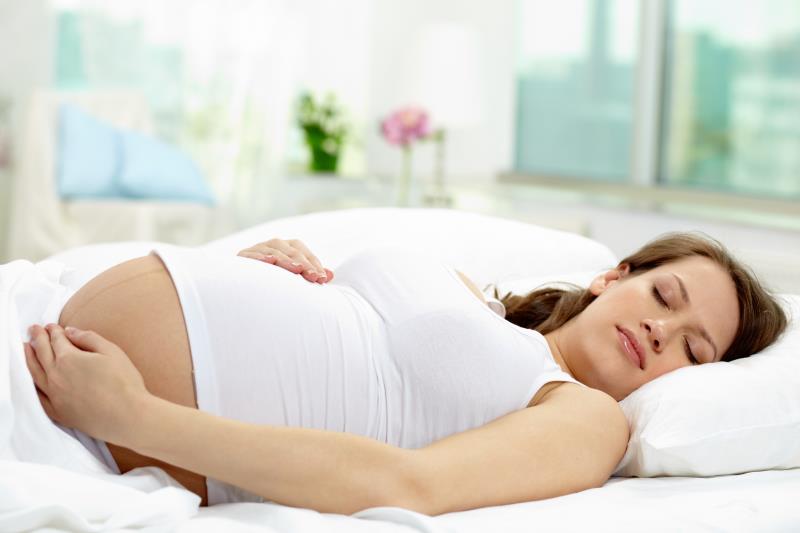
Sleeping on the back or on the right side during pregnancy was not associated with a higher risk of adverse pregnancy outcomes compared with sleeping on the left, reveals the NuMoM2b* study, contrary to the common belief that pregnant women should sleep on their left side.
“Sleeping on the back or right side is thought to increase the risk for adverse perinatal outcomes owing to compression of uterine blood vessels and decreased uterine blood flow,” the researchers noted. “[Our] data should provide reassurance to women regarding sleep position through 30 weeks of gestation.”
Contrary to common belief, women who slept on their back or on their right side were no more likely than those who slept on their left side during the first trimester to experience the primary composite outcome comprising stillbirth, gestational hypertensive disorders, and a small-for-gestational-age newborn (adjusted odds ratio [OR], 1.00, 95 percent confidence interval [CI], 0.89–1.14). [Obstet Gynecol 2019;doi:10.1097/AOG.0000000000003458]
Similarly, there were no differences in pregnancy outcomes between the different sleeping positions reported during midpregnancy (OR, 0.99, 95 percent CI, 0.89–1.11).
The findings came from a secondary analysis of the prospective observational NuMoM2b study, which included 8,706 nulliparous women (mean age 27.1 years) with a singleton pregnancy. The participants had three study visits outside their routine clinical care, during which they prospectively completed sleep questionnaires during the first (6 0/7 to 13 6/7 gestational weeks) and third visits (22 0/7 to 29 6/7 gestational weeks).
The pregnancy outcomes were comparable among the various sleep positions (left lateral, right lateral, supine, or other positions) regardless of whether the sleep position was reported upon going to bed or when waking up.
Also, no significant differences were found for the Individual component in the primary outcome, except that non-left lateral sleep position during midpregnancy appeared to be protective against stillbirth (OR, 0.27, 95 percent CI, 0.09–0.75).
For a subset of women who had their sleep position measured objectively using the Embletta Gold device, the findings were similar to those observed for self-reported sleep position — there were no significant differences in the risk for adverse pregnancy outcomes between women who slept on their back more than 50 percent of the time vs those on their back <50 percent of the time.
“This study should cause us to reconsider how we counsel pregnant women regarding sleep position …. they should feel comfortable sleeping in any position that works for them,” wrote Drs Nathan Fox and Emily Oster from the Icahn School of Medicine at Mount Sinai in New York, New York and Brown University in Providence, Rhode Island, US, respectively, in an accompanying editorial. [Obstet Gynecol 2019;doi:10.1097/AOG.0000000000003466]
“A small share of pregnant women will experience a stillbirth, no matter how they sleep,” they added. “[When this happens,] advice like this gives women an avenue to blame themselves, and we need to do our best to relieve them of this guilt … [by] not perpetuating advice about unproven causes of stillbirth such as sleep position.”